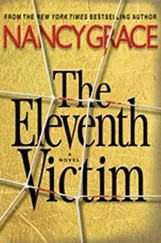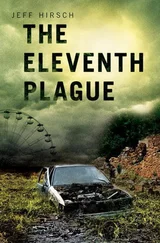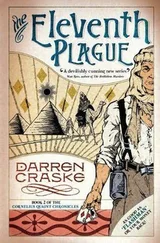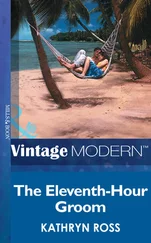Anthony Summers - The Eleventh Day
Здесь есть возможность читать онлайн «Anthony Summers - The Eleventh Day» весь текст электронной книги совершенно бесплатно (целиком полную версию без сокращений). В некоторых случаях можно слушать аудио, скачать через торрент в формате fb2 и присутствует краткое содержание. Жанр: Старинная литература, на английском языке. Описание произведения, (предисловие) а так же отзывы посетителей доступны на портале библиотеки ЛибКат.
- Название:The Eleventh Day
- Автор:
- Жанр:
- Год:неизвестен
- ISBN:нет данных
- Рейтинг книги:3 / 5. Голосов: 1
-
Избранное:Добавить в избранное
- Отзывы:
-
Ваша оценка:
- 60
- 1
- 2
- 3
- 4
- 5
The Eleventh Day: краткое содержание, описание и аннотация
Предлагаем к чтению аннотацию, описание, краткое содержание или предисловие (зависит от того, что написал сам автор книги «The Eleventh Day»). Если вы не нашли необходимую информацию о книге — напишите в комментариях, мы постараемся отыскать её.
The Eleventh Day — читать онлайн бесплатно полную книгу (весь текст) целиком
Ниже представлен текст книги, разбитый по страницам. Система сохранения места последней прочитанной страницы, позволяет с удобством читать онлайн бесплатно книгу «The Eleventh Day», без необходимости каждый раз заново искать на чём Вы остановились. Поставьте закладку, и сможете в любой момент перейти на страницу, на которой закончили чтение.
Интервал:
Закладка:
A bright U.S. Airways employee in Portland, Maine, was already focusing on passengers Atta and Omari. On learning of the Trade Center crashes—two crashes at the same location in seventeen minutes had to be terrorism—security coordinator Diane Graney pulled the records to see if any passengers had left Portland for Boston that morning on the first leg of a longer journey. There were those two same names: Atta and Omari, booked to fly on to Los Angeles aboard American Flight 11.
Graney talked with the customer service representative who had checked in the two men. He remembered them, remembered that Omari had seemed not to know any English, that he had kept quiet and tagged along behind Atta. He remembered that, told he would have to check in again at Boston, Atta had “clenched his jaw … looked like he was about to get mad.” He remembered, too, that Atta had checked two bags. Graney called her manager, and together they called corporate security.
Before 6:00 A.M., it would emerge, a security camera at Portland airport had recorded the pair, Atta in a blue shirt and dark pants, Omari in lighter clothing, retrieving hand baggage from the X-ray machine at the security point. Nothing about their demeanor, nothing in the expressions on their faces, had betrayed what they were about to do.
It would be a long time before the pieces of the jigsaw would be found and seen to make sense. From Portland, it would be discovered, Atta had called two key fellow conspirators; Marwan al-Shehhi, a citizen of the United Arab Emirates, whose name appeared on the manifest of United Airlines Flight 175, the second plane hijacked; and a Lebanese man named Ziad Jarrah, who had flown on Flight 93, the fourth plane hijacked.
The Nissan rental car Atta had used, found where he had left it in the parking lot, contained a rental agreement in Atta’s name, maps of Boston and Maine, fingerprints and hairs—and a Chips Ahoy! cookie package. At other airports, however, and in other hotels and parking lots, there would be evidential treasure.
At Boston’s Logan Airport, where two of the hijacker teams had boarded their target airliners, the FBI found two cars, a blue Hyundai Accent and a white Mitsubishi Mirage. The Hyundai had been rented in the name of “Fayez Ahmed,” the two first names of Flight 175 hijacker Banihammad, from the United Arab Emirates. Phone records linked him, too, to Atta—they had spoken three times early on 9/11. Hotel stationery left in the Hyundai identified one of the Boston area hotels the hijackers had used, the Milner on South Charles Street. Banihammad had been ticketed for overstaying his time on a parking meter across the street from the hotel.
The white Mitsubishi at Logan was found rapidly, thanks to the man who had pulled up alongside and—as described earlier—reported the strange behavior of the three Arabs seated in it. The car had been rented by Flight 11 hijacker Wail al-Shehri, who had on the eve of the hijackings shared Room 433 at the Park Inn Motel near the airport with his brother Waleed and Satam al-Suqami. One of them, agents concluded, had slept in the bathtub.
Two comrades, Hamza and Ahmed al-Ghamdi—members of the same Saudi tribe but apparently not brothers—had stayed first at the upmarket Charles Hotel, just behind the John F. Kennedy School of Government, found it too pricey, and moved to a Days Inn. The Ghamdis were truly parsimonious. They tipped the driver of the cab that took them to the airport, on the way to hijack Flight 175, just 15 cents.
The contents of the cars at the airports and the hotel rooms, and the contacts the hijackers made, revealed an unexpected side of the Arabs—unexpected, that is, in supposed Muslim zealots. Muslims living according to their religious tenets are forbidden to engage in zināa —premarital sex or adultery. Even masturbation is harām— forbidden—except in certain circumstances. Anecdotal evidence suggests that some of the future hijackers respected these rules. In one of the rooms they had used at a seaside motel in Florida, a witness was to recall, two of the men draped towels over pictures on the wall of women in bathing suits. These were all young men, however—most of them in their twenties—and probably knew they were soon to die.
English-language reading the hijackers left behind ranged from what the FBI inventory calls “romance-type” books to an old copy of Penthouse , found under a bed. Among the toiletries found in one of the cars were a dozen Trojan condoms. It would turn out that several of the terrorists had sought out prostitutes in their last days alive.
Many other, evidentially significant, clues came out of Boston. From tracking the phone records, it early on began to look as though Atta had headed the operation in the field. In both Portland and Boston, agents got started on a key element in the case—the money trail. A FedEx bill in a trash can, calls to the United Arab Emirates, calls to Western Union, an attempt to send money from a TravelX office—all were clues that contributed to understanding how the 9/11 attacks had been funded. Much of the money had come through two key contacts in the Emirates and—faithful to the Muslim precept that prohibits squandering wealth—the men about to die were returning what was left over.
There were ominous indications, too, that the hijackers had had associates in the United States. Agents puzzled over a strange incident involving a hotel room the hijackers had used. “A maid at the Park Inn,” an FBI report noted, advised “that an Arabic male answered the door of the room at approximately 11:00 a.m. on the morning of 9/11/01. The man asked her to come back later to clean because someone in the room was sleeping.” Who was the unknown Arab still in a hijacker’s room more than two hours after the hijackers had carried out their mission and gone to their deaths? And if there was a second man in the room, who was he? Were fellow terrorists, “sleepers,” at large in the United States?
In one of the hijackers’ cars, agents found a piece of paper with a name and a phone number, 589-5316, and—scrawled on a map in yellow highlighter—a second name and two numbers, 703–519–1947 and 703–514–1947. The names related to men who could be traced—leading to manhunts, arrests, and protracted investigations.
Washington’s Dulles Airport, where the five American 77 hijackers had boarded, was replete with clues. Security camera pictures, and a detailed account by a security guard, seemed to indicate that several of the terrorists had reconnoitered a secure area of the airport the evening before the attacks. They may, too, have had the use of an electronic pass—another indication that the hijackers may have had accomplices.
There were major finds in the blue, California-registered Toyota Corolla found parked at Dulles. The vehicle was registered to Flight 77 hijack suspect Nawaf al-Hazmi, yet another Saudi, and he (and perhaps another man) had left their personal belongings in the vehicle. There was clothing—T-shirts, pants, shorts, belts, socks, and briefs. There were toiletries—Nivea cream, Dry Idea deodorant, Dr. Scholl’s foot powder, Breath Remedy tongue spray, and Kleenex tissues. There was a broken pair of sunglasses, a hairbrush, an electric razor, no fewer than three alarm clocks, a compact disk entitled The Holy Qur’an , and worry beads.
As well as the bric-a-brac of daily life, though, there was also investigative treasure: fragments of torn paper relating to Flight 77, which, reassembled, revealed handwritten notes; a receipt for a driver’s license issued to Hazmi in San Diego, banking information for him and fellow Saudi Hani Hanjour—another Flight 77 suspect—and a doctor’s prescription written for Hazmi’s Saudi comrade Khalid al-Mihdhar. There were mailbox receipts; a flyer for a library in Alexandria, Virginia; addresses in Virginia, Maryland, New Jersey, and Arizona; and a hand-drawn map pointing to an address in a suburb of San Diego.
Читать дальшеИнтервал:
Закладка:
Похожие книги на «The Eleventh Day»
Представляем Вашему вниманию похожие книги на «The Eleventh Day» списком для выбора. Мы отобрали схожую по названию и смыслу литературу в надежде предоставить читателям больше вариантов отыскать новые, интересные, ещё непрочитанные произведения.
Обсуждение, отзывы о книге «The Eleventh Day» и просто собственные мнения читателей. Оставьте ваши комментарии, напишите, что Вы думаете о произведении, его смысле или главных героях. Укажите что конкретно понравилось, а что нет, и почему Вы так считаете.











